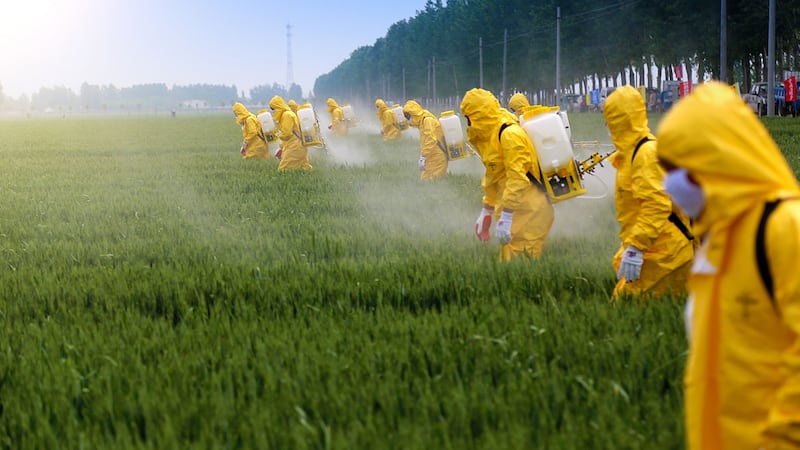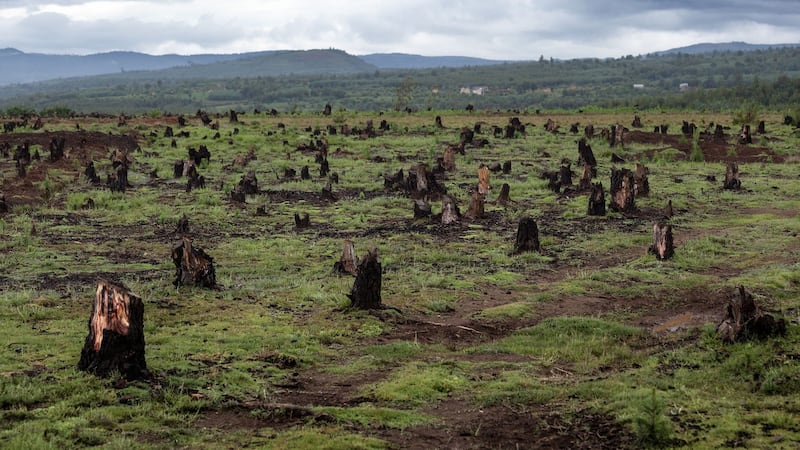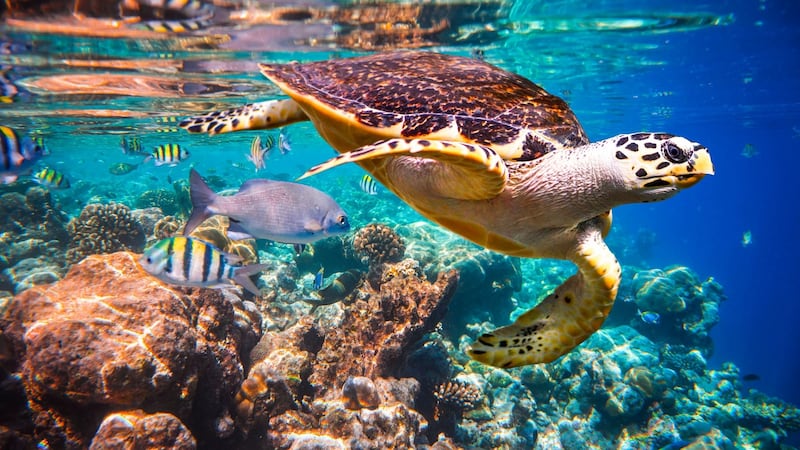Nature is declining globally at rates unprecedented in human history “with grave impacts on people around the world now likely”, according to the most extensive evaluation of life on Earth.
Leading specialists in biodiversity and conservation, conclude the loss of plants and animals is accelerating with 1,000,000 species now threatened with extinction due to human activity.
The scale of this decline “is eroding the foundations of our economies, livelihoods, food security, health and quality of life worldwide”.
The findings are in a landmark report from the Intergovernmental Science-Policy Platform on Biodiversity and Ecosystem Services (IPBES) issued in Paris on Monday after leading scientists and representatives of 132 governments including Ireland finalised the text after a three-year evaluation.
The decline of nature is at a dangerous level with no country unaffected, and presents a challenge to the Planet on top on the threat of climate breakdown, the report warns. The scientists call for a similar degree of urgency to the international response to global warming to arrest species loss, because of a short timeframe to address the crisis is narrowing.
The current global response to human-induced impairment of natural systems critical to the well-being of humans is “insufficient”, the UN body finds, while “transformative changes” are needed to restore and protect nature.


Among the findings in the 1,800-page report are:
- The recent impact of human damage on the natural world is mainly driven by changes in land use; notably urbanisation, deforestation and agricultural intensification;
- With deep-sea bottom trawling and the accelerating push to mine the ocean depths, there is a risk of extinguishing biodiversity never before seen, on which entire food chains and ecosystems depend;
- The average abundance of native species in most major terrestrial "biomes" (communities of plants and animals that have common characteristics for the environment they exist in) has fallen by at least 20 per cent;
- Native biodiversity "has often been severely impacted by invasive alien species";
- Population sizes of wild vertebrate species have declined over the past 50 years on land, in freshwater and in the sea at a rate unseen since humans inhabited the Earth.
"The overwhelming evidence of the IPBES Global Assessment, from a wide range of different fields of knowledge, presents an ominous picture," said IPBES Chair, Sir Robert Watson.
“The health of ecosystems on which we and all other species depend is deteriorating more rapidly than ever. We are eroding the very foundations of our economies, livelihoods, food security, health and quality of life worldwide.”
“The report also tells us that it is not too late to make a difference, but only if we start now at every level from local to global,” he said. “Through transformative change, nature can still be conserved, restored and used sustainably. By transformative change, we mean a fundamental, system-wide reorganization across technological, economic and social factors, including paradigms, goals and values.”
The IPBES Global Assessment Report on Biodiversity and Ecosystem Services builds its 2005 assessment by introducing innovative ways of evaluating evidence. Compiled by 145 expert authors from 50 countries, with inputs from another 310 contributing authors, it provides a comprehensive picture of the relationship between economic development pathways and their impacts on nature including sustainable options that can be pursued.
"Biodiversity and nature's contributions to people are our common heritage and humanity's most important life-supporting 'safety net'. But our safety net is stretched almost to breaking point," said Prof Sandra Díaz, who co-chaired the assessment with Prof Josef Settele and Prof Eduardo S. Brondízio.
“The diversity within species, between species and of ecosystems, as well as many fundamental contributions we derive from nature, are declining fast, although we still have the means to ensure a sustainable future for people and the planet,” she added.
Accelerating extinction
The average abundance of native species in most major land-based habitats has fallen by at least 20 per cent, mostly since 1900, the IPBES concludes. More than 40 per cent of amphibian species, almost 33 per cent of reef-forming corals and more than a third of all marine mammals are threatened.
The picture is less clear for insects, but available evidence supports a tentative estimate of 10 per cent being threatened including pollinators such as bees. At least 680 vertebrate species had been driven to extinction since the 16th century and more than 9 per cent of all domesticated breeds of mammals used for food and agriculture had become extinct by 2016, with at least 1,000 more breeds still threatened.
“Ecosystems, species, wild populations, local varieties and breeds of domesticated plants and animals are shrinking, deteriorating or vanishing. The essential, interconnected web of life on Earth is getting smaller and increasingly frayed,” Prof Settele said.
The assessment’s authors have ranked, for the first time “the direct drivers of change in nature”. These main culprits are: (1) changes in land and sea use; (2) direct exploitation of organisms; (3) climate change; (4) pollution and (5) invasive alien species.
The report notes greenhouse gas emissions have doubled since 1980, raising average global temperatures by at least 0.7 degrees, with climate change already impacting nature on a par with genetics – and it may soon become the biggest threat to nature.
Despite progress to conserve nature, the report finds that global goals for conserving and sustainably using nature and achieving sustainability “cannot be met by current trajectories”.
Current negative trends in biodiversity and ecosystems will undermine progress towards 80 per cent (35 out of 44) of the assessed targets of the UN Sustainable Development Goals, related to poverty, hunger, health, water, cities, climate, oceans and land. “Loss of biodiversity is therefore shown to be not only an environmental issue, but also a developmental, economic, security, social and moral issue as well,” it finds.

Population and consumption
Key indirect drivers include increased population and per capita consumption; technological innovation, which in some cases has lowered and in other cases increased the damage to nature. It notes a pattern of global interconnectivity, “with resource extraction and production often occurring in one part of the world to satisfy the needs of distant consumers in other regions.”
On land use and marine ecosystems, it concludes:
- Three-quarters of the land-based environment and about 66 per cent of the marine environment have been significantly altered by human actions. These trends have been less severe or avoided in areas held or managed by indigenous peoples and local communities;
- More than a third of the world's land surface and nearly 75 per cent of freshwater resources are now devoted to crop or livestock production;
- Agricultural crop production has increased by about 300 per cent since 1970, raw timber harvest has risen by 45 per cent and 60 billion tons of renewable and non-renewable biomass resources are now extracted globally every year, having nearly doubled since 1980;
- Land degradation has reduced the productivity of 23 per cent of the global land surface; up to US$ 577 billion in annual global crops are at risk from pollinator loss, and 100 to 300 million people are at increased risk of floods and hurricanes because of loss of coastal habitats and protection;
- In 2015, 33 per cent of marine fish stocks were being harvested at unsustainable levels; 60 per cent were "maximally sustainably fished", with just 7 per cent harvested at levels lower than what can be sustainably fished;
- Plastic pollution has increased tenfold since 1980; 300 to 400 million tons of heavy metals, solvents, toxic sludge and other wastes from industrial facilities are dumped annually into the world's waters, while fertilizers entering coastal ecosystems have produced more than 400 ocean "dead zones", totalling more than 245,000 km2 – a combined area greater than that of the UK.









